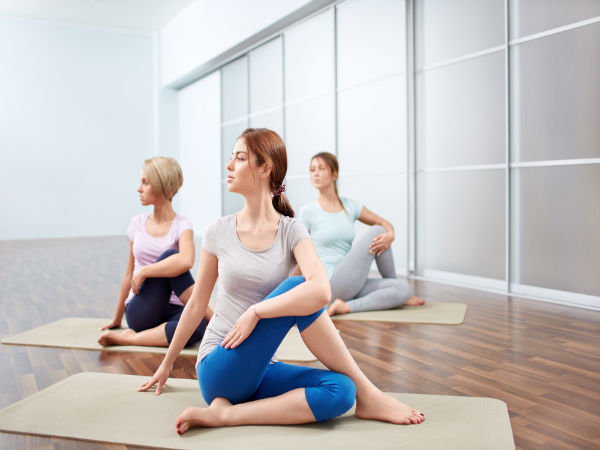The meditative practice has helped Moore get through a painful year marked, not only by an acrimonious divorce, but also by a drug induced seizure that landed her in the hospital.
Ancient practice
Kundalini is a form of physical and meditative yoga that needs the mind, body and all its senses to be in sync with each other. It finds mention in the Ramayana and Mahabharata and was popularised in the 1960s by Yogi Harbhajan Singh.
The underlying principle of this form is that there is a coiled up, dormant, cosmic power that exists at the base of the spine (called Kundalini), and the practise aims to awaken that energy by targeting the seven chakras — root, sacral, solar plexus, heart, throat, third eye and crown. Enlightenment occurs when this energy reaches the crown chakra. It’s different from other forms of yoga — Hatha Yoga, Ashtanga and Iyengar — in that it doesn’t follow a set pattern, as asanas can be performed in any sequence.
Kundalini yoga helps keep the digestive, cardiovascular, lymphatic and nervous system in top shape. It heightens the senses — the ability to taste, smell, feel and see are increased. Yoga trainer Tanvi Mehra of Yoga Station, adds that it’s particularly effective in relieving chronic lower back pain. “For instance, the Bhujangasana corrects body posture, eases stiffness in the lower back and soothes pain.”
Do it like Moore
Three simple asanas that help uncoil your Kundalini:
Bhujangasana
Lie on your stomach. Keep feet together with the upper surface of the foot against the floor. Place hands under the shoulders with palms flat on ground. Keep elbows against rib cage. Inhale and steadily straighten your arms to lift your chest above the ground, keeping pelvis planted on the ground. Feel the arch on your back and try to distribute the stretch evenly along your spine. Breathe and hold for five to 10 breaths. Exhale and bring your body back to the floor. Repeat six times.
Benefits:
Relief from lower back pain, gynaecological disorders like white vaginal discharge and menstrual pains.
Dhanurasana
Lie on stomach with arms beside the body, palms facing upwards. Place chin on floor. Exhale, bend knees and grasp the right ankle with the right hand and the left ankle with the left hand. Slowly take a deep breath and pull ankles up by raising the knees off the floor while simultaneously lifting the chest. Hold breath for 10 seconds. At this moment, the weight of the body should be resting on the abdomen. Exhale slowly and bring your body back to the floor. Repeat six times.
Benefits:
Relief from asthma as the chest and lung muscles are stretched.
Padmasana
Sit on floor with legs in front. Bend right knee and place right foot on the left thigh with the sole facing skywards. Then place the left foot on the right thigh similarly. You are now sitting in Padmasana. Now, place the left hand over the left knee and right hand over the right knee with palms facing upwards and the index-finger touching the middle portion of the thumb. Close your eyes and concentrate on normal breathing. Hold the position for long as you can.
Benefits:
Provides relief from constipation, acidity and flatulence.
